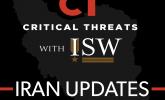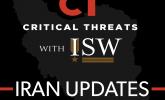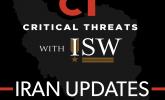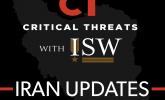Iran Update, March 7, 2023
March 7, 2023 - ISW Press
CTP assesses with moderate confidence that the Iranian regime is using the recent chemical attacks throughout Iran to set conditions to securitize the country ahead of major national holidays. A coordinated, countrywide campaign to poison primarily schoolgirls has been ongoing since November 2022, as CTP previously reported. Regardless of whether the regime had any involvement in or knowledge of the attacks, it appears to be using these attacks to justify an increased security presence throughout Iran. There are signs that the Law Enforcement Command (LEC) has already deployed to areas around schools across Iran. LEC spokesperson Brigadier General Saeed Montazer al Mahdi announced on March 6 that the LEC has increased its patrols near schools and universities. Social media users circulated footage on March 7 showing LEC patrol vehicles near one girls’ school in Kowsar County, Ardabil Province. Both Supreme Leader Ali Khamenei and President Ebrahim Raisi called on intelligence and law enforcement organizations to identify and apprehend the perpetrators of the recent attacks on March 7. Islamic Revolutionary Guard Corps (IRGC) Commander Major General Hossein Salami noted on March 7 that the IRGC is prepared to “guarantee the security of the country” and “deal seriously with the agents causing psychological insecurity among Iranian families.” Several LEC officials indicated that the LEC will mobilize to address the ”threats” posed by the upcoming holiday celebrations to ”public peace” and the ”environment” and that they will be prepared to make arrests. Iranians will be participating in the Chahar Shanbeh Souri holiday on March 15, which involves the symbolic act of jumping over fires in celebration of the upcoming new year. Iranians will also celebrate Nowrouz (the Persian new year celebration) on March 20, which commonly involves gathering their families around a Haft Sin table and sharing gifts with one another.










